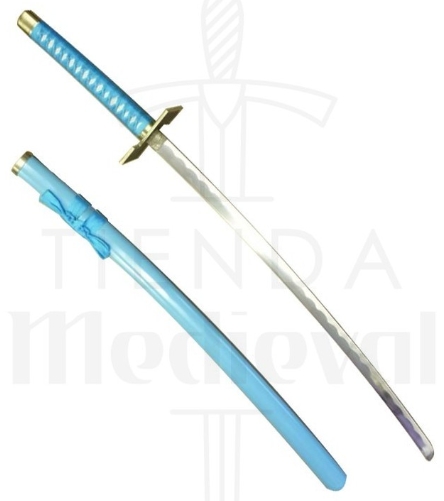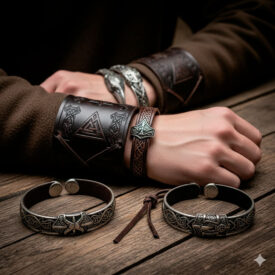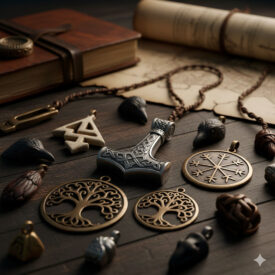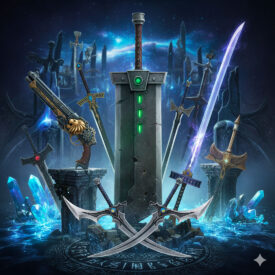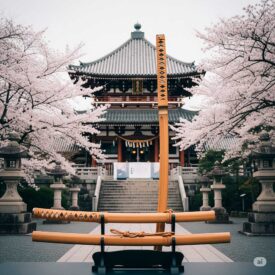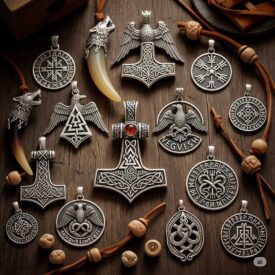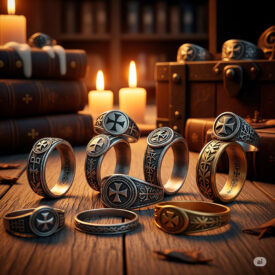What secrets lie behind the unleashing of a Resurrección? In the vast and enigmatic universe of Bleach, the Espadas, the ten most formidable Arrancar serving Sōsuke Aizen, are not just mere titles, but living manifestations of power, philosophy, and, in many cases, personal tragedy. Their Resurrecciones are the zenith of their being, an explosion of energy that returns them to a primal form and unleashes abilities that can alter the very fabric of reality. Prepare for a deep dive into the soul of these legendary living weapons and discover the essence of their unleashed fury.

In this exhaustive analysis, we will unravel the hierarchy, the aspects of death that define each Espada, and the astonishing diversity of their released powers. From the colossal fury of Yammy to the abyssal nihilism of Ulquiorra, each number conceals a story of evolution, conflict, and a destiny forged by sword and power. Are you ready to wield knowledge and understand the true magnitude of the Resurrecciones?
The Essence of Arrancar Zanpakutō: Beyond the Blade
The zanpakutō in Bleach are the mirror of the soul, but for Arrancar, they are the seal of their inner Hollow. Unlike Shinigami, who unleash the potential of their sword, Arrancar seal their original Hollow form within their zanpakutō. The Resurrección is, therefore, a “release” that returns them to a form closer to their Hollow existence, granting a massive increase in power and specialized abilities.
The Name and Rebirth: Why Does Resurrección Matter?
Knowing the name of their weapon or, in the case of Arrancar, releasing their Resurrección, is the key to unleashing their true potential. It is not just an aesthetic change; it is a transformation that redefines their limits. The Resurrección is the rebirth of the Hollow in its most powerful form, where each ability emerges from its “aspect of death,” a philosophy that shapes their being and their combat.
Chronology of the Espada in Bleach: From Origins to Outcomes
Understanding the Espada requires knowing their trajectory. From their humble Hollow origins to their ascension as Aizen’s elite warriors, and their final destinies. This chronology details the key moments of their evolution and the battles that defined their legacy in Hueco Mundo and beyond.
| Era | Event |
|---|---|
| I. Origins and Evolution (Pre-Aizen) | |
| Evolution of Hollows | Hollows progress through the Menos stages: Gillian (giant conglomerates), Adjuchas (smaller and animalistic), and Vasto Lorde (semi-humanoids, very scarce and dangerous to the Soul Society). |
| Natural Arrancar |
|
| Barragán’s Reign | Barragán Louisenbairn (aspect: Aging/Time) was the ancient king of Hueco Mundo, ruling from a roofless castle before Aizen’s arrival. |
| Previous Generations of Espada |
|
| Privaron Espada | The Privaron Espada (three-digit numbers), like Dordoni Alessandro Del Socaccio (No. 103) and Gantenbainne Mosqueda (No. 107), were originally the main members of the Espada group under Barragán’s command. |
| II. Formation of Aizen’s Espada | |
| Aizen and the Hōgyoku | Sōsuke Aizen uses the Hōgyoku to artificially accelerate the evolution of Hollows, creating a new elite of Arrancar. Barragán is forced to submit to Aizen. |
| Rank System | Aizen establishes the ten strongest Arrancar as the Espada (numbered 1 to 10, or 0 to 9), based on reiatsu level (a lower number indicates greater strength/lethality). |
| Members and Ranks |
|
| Resurrección Rules | Aizen prohibits Espada ranks 4 to 0 from releasing their Resurrección within Las Noches due to the risk of massive destruction of the fortress. |
| Rank Fluctuations |
|
| III. Climax of the Arrancar Arc (Defeats) | |
| Defeats (Lower Ranks) |
|
| Ulquiorra and Segunda Etapa | Ulquiorra (No. 4) reveals his Resurrección: Segunda Etapa to Ichigo, a transformation that even Aizen had not seen. He is defeated by Ichigo’s Hollow form and dies while trying to understand “the heart.” |
| Defeats (Higher Ranks and Exceptions) |
|
| IV. Later Fate (Post-Aizen / TYBW) | |
| Immediate Government in Hueco Mundo | After Aizen’s defeat, Tier Harribel is healed by Orihime Inoue and reluctantly agrees to act as de facto ruler of Hueco Mundo to restore order among the Hollows. |
| Survivors and Reappearances | Grimmjow and Nelliel (who regains her adult form and memories) survive the Arrancar Arc and reappear later in the narrative. |
| Wandenreich Invasion (TYBW) |
|
| Final Governance | After Yhwach’s defeat, Harribel is rescued by Nelliel and Grimmjow and reinstated as ruler of Hueco Mundo. The three (Harribel, Nelliel, and Grimmjow) coexist in a truce agreement, with Harribel generally considered the leader. |
| Technical Context: Resurrección as a Process and Notes on Ulquiorra | |
| Nature of Resurrección | An Arrancar’s Resurrección releases the form closest to its original Hollow existence, granting a significant increase in power and abilities derived from its aspect of death. Arrancar Zanpakutō seal the Arrancar’s original Hollow form and abilities; their release reverts to the Hollow state, in contrast to Shinigami Zanpakutō. |
| Ulquiorra’s Segunda Etapa | Ulquiorra’s Resurrección: Segunda Etapa is an evolutionary anomaly —a second release that draws even closer to absolute Hollow power— and is considered a capability Aizen had not fully anticipated, which explains why Ulquiorra held the No. 4 position despite his immense power. |
| Relationship of Ranks and Resurrección Names (Summary) | |
| Rank — Espada — Resurrección |
|
The Twelve Blades: A Detailed Analysis of Each Resurrección
Each Espada is a study in itself, an abyss of power and meaning. Their ranks, though indicative of the reiatsu Aizen bestowed upon them, do not always reflect the complexity of their abilities or their hidden potential. Delve into the heart of each Espada and discover the ferocity of their Resurrección.
| Espada | Aspect of Death | Zanpakutō | Resurrección | Key Abilities |
|---|---|---|---|---|
| 0/10: Yammy Riyalgo | Rage (Anger) | Ira | Ira (Wrath) | Drastically increases in size and power with anger. Gonzui (Soul Suction) to absorb souls. Extremely strong Hierro. |
| 1: Coyote Starrk | Solitude | Los Lobos | Los Lobos (Wolf Pack) | Splits into two entities (himself and Lilynette). Cero Metralleta (hundreds of simultaneous Cero). Generation of explosive wolves. Master of Sonido. |
| 2: Baraggan Louisenbairn | Old Age/Time | Arrogante | Arrogante | Control over entropy and time. Respira (Breath of Death): mist that ages and disintegrates everything. Time dilation field. |
| 3: Tier Harribel | Sacrifice | Tiburón | Tiburón (Imperial Shark Empress) | Mastery of water (Hydrokinesis). Ola Azul, La Gota (pressurized water projectile), Hirviendo (boils water), Cascada. Swordsmanship and analytical skill. |
| 4: Ulquiorra Cifer | Emptiness/Nihilism | Murciélago | Murciélago and Segunda Etapa | 1st Stage (Murciélago): bat-like appearance, Cero Oscuras.
2nd Stage (Segunda Etapa): exponentially increases his power, high-speed regeneration, Lanza del Relámpago (destructive energy projectiles). Unique with two Resurrecciones. |
| 5: Nnoitra Gilga | Despair | Santa Teresa | Santa Teresa | Strongest Hierro of all Espada. Six scythe-wielding arms. Golden Cero from the tongue. |
| 6: Grimmjow Jaegerjaquez | Destruction | Pantera | Pantera | Feline features, claws. Gran Rey Cero (forbidden). Desgarrón (energy claws). Great speed and physical strength. |
| 6 (Temp): Luppi Antenor | – | Trepadora | Trepadora | Eight lethal tentacles from his back, independent control. |
| 7: Zommari Leroux | Intoxication | Brujería | Brujería | Fastest Sonido. Gemelos Sonido (clones). Amor (body control by sight). |
| 8: Szayelaporro Granz | Insanity | Fornicarás | Fornicarás | Biological Warfare (copies, power nullification). Voodoo Dolls (organ damage). Gabriel (rebirth by absorption). |
| 9: Aaroniero Arruruerie | Greed | Glotonería | Glotonería | Absorption of Hollows and mimicry (over 33,650). Transformation into absorbed Hollows. Emotional manipulation. |
| Ex-3: Nelliel Tu Odelschwanck | – | – | – | Centaur form. Cero Doble (absorbs and returns duplicated Cero). Great speed and swordsmanship. |
- 0/10: Yammy Riyalgo
-
- Aspect of Death: Rage
- Zanpakutō: Ira
- Resurrección: Ira (Wrath)
- Key Abilities: Drastically increases in size and power with anger. Gonzui (Soul Suction) to absorb souls. Extremely strong Hierro.
- 1: Coyote Starrk
-
- Aspect of Death: Solitude
- Zanpakutō: Los Lobos
- Resurrección: Los Lobos (Wolf Pack)
- Key Abilities: Splits into two entities (himself and Lilynette). Cero Metralleta (hundreds of simultaneous Cero). Generation of explosive wolves. Master of Sonido.
- 2: Baraggan Louisenbairn
-
- Aspect of Death: Old Age/Time
- Zanpakutō: Arrogante
- Resurrección: Arrogante
- Key Abilities: Control over entropy and time. Respira (Breath of Death): mist that ages and disintegrates everything. Time dilation field.
- 3: Tier Harribel
-
- Aspect of Death: Sacrifice
- Zanpakutō: Tiburón
- Resurrección: Tiburón (Imperial Shark Empress)
- Key Abilities: Mastery of water (Hydrokinesis). Ola Azul, La Gota (pressurized water projectile), Hirviendo (boils water), Cascada. Swordsmanship and analytical skill.
- 4: Ulquiorra Cifer
-
- Aspect of Death: Emptiness/Nihilism
- Zanpakutō: Murciélago
- Resurrección: Murciélago and Segunda Etapa
- Key Abilities:1st Stage (Murciélago): bat-like appearance, Cero Oscuras.
2nd Stage (Segunda Etapa): exponentially increases his power, high-speed regeneration, Lanza del Relámpago (destructive energy projectiles). Unique with two Resurrecciones.
- 5: Nnoitra Gilga
-
- Aspect of Death: Despair
- Zanpakutō: Santa Teresa
- Resurrección: Santa Teresa
- Key Abilities: Strongest Hierro of all Espada. Six scythe-wielding arms. Golden Cero from the tongue.
- 6: Grimmjow Jaegerjaquez
-
- Aspect of Death: Destruction
- Zanpakutō: Pantera
- Resurrección: Pantera
- Key Abilities: Feline features, claws. Gran Rey Cero (forbidden). Desgarrón (energy claws). Great speed and physical strength.
- 6 (Temp): Luppi Antenor
-
- Aspect of Death: –
- Zanpakutō: Trepadora
- Resurrección: Trepadora
- Key Abilities: Eight lethal tentacles from his back, independent control.
- 7: Zommari Leroux
-
- Aspect of Death: Intoxication
- Zanpakutō: Brujería
- Resurrección: Brujería
- Key Abilities: Fastest Sonido. Gemelos Sonido (clones). Amor (body control by sight).
- 8: Szayelaporro Granz
-
- Aspect of Death: Insanity
- Zanpakutō: Fornicarás
- Resurrección: Fornicarás
- Key Abilities: Biological Warfare (copies, power nullification). Voodoo Dolls (organ damage). Gabriel (rebirth by absorption).
- 9: Aaroniero Arruruerie
-
- Aspect of Death: Greed
- Zanpakutō: Glotonería
- Resurrección: Glotonería
- Key Abilities: Absorption of Hollows and mimicry (over 33,650). Transformation into absorbed Hollows. Emotional manipulation.
- Ex-3: Nelliel Tu Odelschwanck
-
- Aspect of Death: –
- Zanpakutō: –
- Resurrección: –
- Key Abilities: Centaur form. Cero Doble (absorbs and returns duplicated Cero). Great speed and swordsmanship.
Beyond Fiction: The Bleach Katana Collection
The impact of Bleach katanas transcends the screen and the manga pages. For many fans, owning a replica is a way to connect with the epic of their heroes. The market has evolved to offer pieces ranging from mere adornment to steel-forged reproductions, seeking to capture not only the form but also the essence of these legendary weapons.
Among the most coveted materials for achieving a quality Bleach katana are:
- 1060 Carbon Steel: Valued for its hardness and ability to hold an edge, it is the choice for functional replicas.
- Stainless Steel: Corrosion-resistant, common in decorative pieces or for cosplay, where lightness and finish are paramount.
- Wood and Resins: Used in tsukas, tsubas, and scabbards to replicate the intricate artistic details of each zanpakutō.
Fidelity in design is the cornerstone; from the tsuka wrapping patterns to the blade color and tsuba details, each element must “narrate” the story of the character for whom it was created.
The Legendary Zangetsu: Ichigo Kurosaki’s Sword
One cannot speak of zanpakutō without paying homage to Zangetsu, Ichigo Kurosaki’s sword, whose journey is as complex as that of its wielder. From its first appearance as an oversized blade to its definitive form, Zangetsu has been a constant reflection of Ichigo’s growth, internal conflicts, and unyielding will.
In the beginning, the disproportionate size of Ichigo’s sword surprised even the most seasoned Shinigami, symbolizing a primal, indomitable, and still unpolished power. The initial destruction of his zanpakutō at the hands of Captain Kuchiki forced Ichigo into rigorous training, revealing that the sword was not just a tool, but an extension of his own being and, ultimately, a guide to understanding himself.
The Evolution of Zangetsu: From “Old Man” to Tensa Zangetsu
The manifestation of Zangetsu as an elderly, enigmatic man was key to Ichigo’s development. This image evolved, as Ichigo matured, into a younger, more stylized version, a reflection of the hero’s internal transformations. Tensa Zangetsu, with its Bankai form, is not just a compact, lethal blade; it is the crystallization of Ichigo’s growth, the speed and precision of his forged spirit.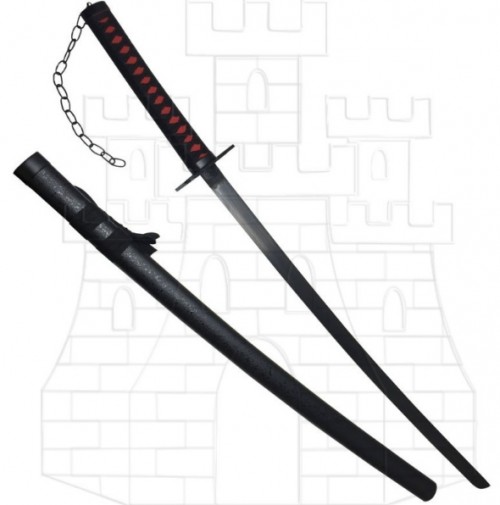
Ichigo’s iconic Shikai, a large blade wrapped in bandages, spoke of raw force waiting to be unleashed. His Bankai, Tensa Zangetsu, transforms that force into a compact black katana, with red details and a tsuba marked with the kanji for “forbidden,” a symbol of contained power ready to unleash the ultimate assault. Every detail, the tsuka wrapping that becomes a chain, the engraved kanji, all tell a story of struggle and evolution.
Other Unforgettable Katanas: Design and Spirit
The Bleach universe is a visual feast of zanpakutō designs that are as varied as the characters who wield them. Beyond Ichigo, many other swords have left an indelible mark on fans’ memories.
- Rukia Kuchiki’s katana, with its delicacy and elegance, represents the nobility and discipline that characterize her. Her Shikai and Bankai, focused on ice, reflect her purity and control.
- Kisuke Urahara’s, with a deceptively simple appearance, hides technical secrets and a strategic mindset, in accordance with its wielder.
- Grimmjow Jaegerjaquez’s zanpakutō, with rough lines and a fierce aesthetic, is the manifestation of his aggression and indomitable spirit in combat.
The Subtle Power Classification: Beyond the Number
The hierarchy of the Espada, numbered 0 to 9, is complex and not always linear. While a lower number generally denotes greater reiatsu and lethality, the combat ability, versatility of Resurrecciones, and the “aspect of death” of each Espada can alter this perception. Let’s analyze how strength manifests:
- Yammy (0): His transformation to rank 0 makes him the strongest Espada in raw power, but his gigantic size makes him predictable.
- Ulquiorra (4): His Segunda Etapa, an anomaly unknown to Aizen, projects him as a contender for the most powerful Espada, with the Lanza del Relámpago as a devastating attack.
- Barragán (2): His “Respira” ability is among the most overwhelming, his control over entropy and time makes him almost invincible to conventional attacks.
- Starrk (1): Represents unparalleled saturation firepower, capable of deploying thousands of explosive “wolves,” resolving his loneliness by splitting his soul in two.
This analogy helps to understand how each Espada, with its unique power, is strategically positioned on Aizen’s board.
Dispelling Unknowns about the Espadas’ Resurrections in Bleach
What is the most powerful Resurrección of the Bleach Espadas?
The most powerful Resurrección of the Espadas (Espada) in Bleach is Ulquiorra Cifer’s second Resurrección, called “Segunda Etapa.” In this form, Ulquiorra reaches maximum power in speed, strength, reiatsu, and offensive abilities, being able to defeat and pierce Ichigo with a single Cero, an feat that no other Espada achieved. He is the only Espada to possess two Resurrecciones, which increases his strength to superior levels, solidifying him as the most powerful among them.
Other Resurrecciones are very strong, like Coyote Starrk’s and Barragán’s, but none surpass the maximum level reached by Ulquiorra in his Segunda Etapa. Moreover, although Kenpachi Zaraki with Nozarashi is very destructive, his power does not reach the climax shown by Ulquiorra in this form.
Therefore, in terms of raw power, abilities, and battle effect, Ulquiorra’s Segunda Resurrección is the most powerful of the Espadas.
How do the powers of the different Espada Resurrecciones compare?
 The Espadas possess varied powers in their Resurrecciones, and their level differs significantly depending on the Espada in question. There is no uniform scale, as each one has unique abilities that make them more or less powerful in different contexts.
The Espadas possess varied powers in their Resurrecciones, and their level differs significantly depending on the Espada in question. There is no uniform scale, as each one has unique abilities that make them more or less powerful in different contexts.
High-Level Espadas:
Ulquiorra stands out as one of the most powerful Espadas, especially for his ability to evolve beyond his first Resurrección. His second stage of Resurrección represents an enormous leap in power, creating a significant gap between his base form and initial Resurrección compared to his final transformation. In his first Resurrección, he was already capable of inflicting tremendous damage to Ichigo even when the latter was equipped with his Bankai and Hollow mask.
Starrk represents another considerable level of power, being able to face multiple captains simultaneously, although his power varied according to the different versions of the character presented in different media.
Grimmjow in his Resurrección can reach the High Espada level, with his Resurrección form granting him considerably higher combat capabilities than his base state.
Mid-Level Espadas:
Nnoitra with his Resurrección positions himself at a respectable power level, being able to face captains of the Gotei 13, although his true potential varied according to the context of the battle.
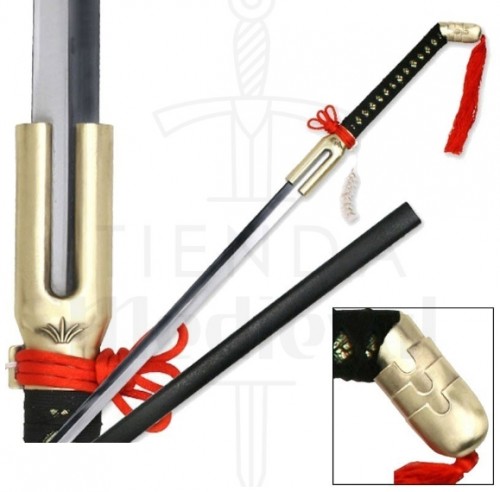 Szayel Aporro in his Resurrección can reach the rank of High Captain, especially if we consider his intelligent combat abilities that complement his raw power.
Szayel Aporro in his Resurrección can reach the rank of High Captain, especially if we consider his intelligent combat abilities that complement his raw power.
Harribel with her Resurrección would demonstrate a power comparable to other mid-to-high-level Espadas, with the ability to maintain serious combat against significant opponents.
Variations by Sources:
It is important to note that there are differences in power between the versions of the Espadas as they appear in the anime, manga, light novels, and additional materials. For example, some versions of the Espadas presented in the novels show extremely high power levels, allowing them to face enemies that surpassed their capabilities in other versions.
In general, the first Resurrección of any Espada significantly elevates their power, but the most dramatic difference occurs with those Espadas who possess a second stage of transformation, as in the case of Ulquiorra, where the increase is almost incomparable.
What unique abilities do the Espada Resurrecciones have?
The Espadas’ Resurrecciones in Bleach have unique abilities that amplify their power and grant them special forms and techniques. Among these abilities are:
- Extreme increase in speed and strength, raising them to superior levels even within the same Arrancar group.
- Significant physical transformation, adopting forms that enhance bestial, animal, or mythological aspects, which boosts their aggressiveness and destructiveness.
- Improved spiritual energy techniques, such as the more powerful Cero (Cero Oscuras) and unique attacks derived from their resurrected form.
- Some Resurrecciones allow them elemental control or special abilities, such as mastery over water or transformation of their weapons into more lethal forms.
- Certain abilities include advanced regeneration, rapid recovery from injuries, and even the ability to be reborn using the body of a trapped enemy.
- Others possess faculties such as enhanced sight or memory that can replicate attacks or transmit visual information to others.
These characteristics vary depending on who possesses them, but in general, the Resurrección is the maximum release that boosts their skills, speed, endurance, and strength with exclusive techniques and a notable change in their appearance and capabilities.
What is the relationship between rage and the power of the Espadas’ Resurrecciones?
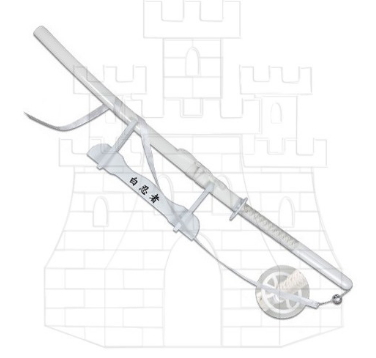 Rage has a direct relationship with the power of some Espadas’ Resurrección: the angrier or more enraged the Espada is, the greater the power they gain in their Resurrección. This increase in strength is especially notable in certain Espada, whose destructive capacity and resistance grow proportionally to their level of rage during combat.
Rage has a direct relationship with the power of some Espadas’ Resurrección: the angrier or more enraged the Espada is, the greater the power they gain in their Resurrección. This increase in strength is especially notable in certain Espada, whose destructive capacity and resistance grow proportionally to their level of rage during combat.
Which Espada has the ability to instantly regenerate?
The sword that has the ability to instantly regenerate is the Lanza de Gungnir, which can regenerate both its wielder and its armor regardless of the severity of the damage suffered. This regeneration is instantaneous and powerful.
The Sword as a Metaphor: A Cultural Symbol
In the Bleach universe, the sword transcends its function as a weapon to become a powerful metaphor. It is a symbol of the characters’ growth, their internal conflicts, and the inextricable relationship between their identity and their power. Each transformation of the zanpakutō is a chapter in the character’s biography, a revelation of their soul forged in steel and reiatsu.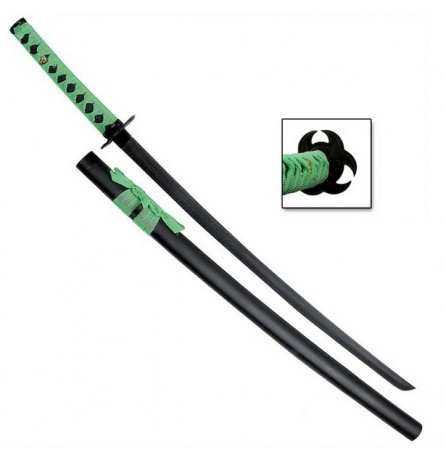
The deep emotional connection that fans have with Bleach Katanas is no coincidence. It is based on the brilliance of Tite Kubo’s design, the emotional depth of his characters, and the undeniable human need to touch and possess what we idolize in fiction. Thus, a replica of a zanpakutō is not just an object, but a tangible fragment of history, a reminder of epic battles, profound teachings, and the revelations that define heroes.
The True Legacy of the Resurrecciones
The study of the Espadas’ Resurrecciones in Bleach is a fascinating journey through power, psyche, and evolution. Each release is a declaration, a war cry that defines the deepest essence of an Arrancar and the philosophy of its death. These living weapons are not just battle standards, but intricate puzzles of personality and destiny.
Bleach katanas, whether the Shinigami’s zanpakutō or the Espadas’ Resurrecciones, continue to be a testament to the power of narrative, a bridge between fantasy and the tangible. They represent stories of growth, sacrifice, and personal mastery. If you feel the call of the blade, seek it with respect and patience, and in every detail, you will find the story of a hero who learned their name, released their power, and fought for everything they loved.
VIEW MORE BLEACH KATANAS | VIEW ANIME KATANAS | VIEW BLEACH THEMED ITEMS
